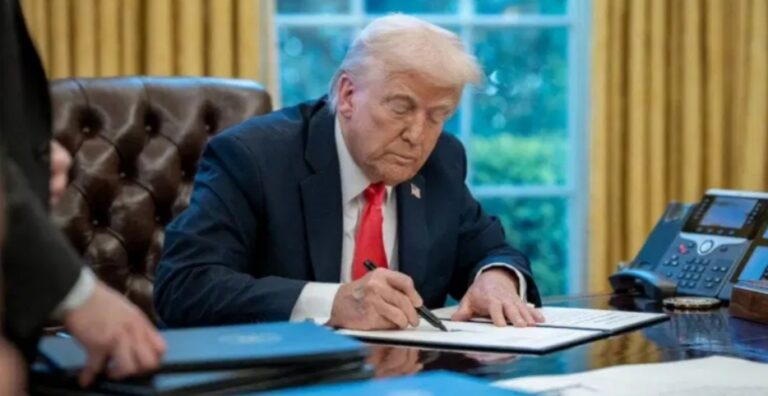Introduction
A tariff is a tax imposed by an importing country on goods that enter its borders. When the United States increases tariffs on Indian products, it is not just a matter of government revenue but also a question of who ultimately bears the burden — American consumers or Indian exporters.
Who Pays the Tariff?
Legally, the U.S. importer is responsible for paying the tariff at the border. However, the importer does not usually absorb the cost entirely. Instead, the economic burden is distributed between the Indian exporter and the end consumer in the United States, depending on market conditions.
Numerical Example
Suppose an Indian exporter sells a product at $100 to a U.S. buyer. If the U.S. government imposes a 20% tariff, the cost at the border becomes:
- Product price = $100
- Tariff (20%) = $20
- Total landed cost = $120
Now, two scenarios can occur:
- Burden on U.S. Consumers
- The importer adds the tariff to the selling price.
- Final retail price = $120 (or more, after adding profit margin).
- U.S. consumers pay more.
- Burden on Indian Exporters
- To stay competitive, the U.S. importer asks the exporter to reduce the price to $83.3.
- After adding the 20% tariff ($16.7), the total cost is back to $100.
- Indian exporter earns less profit.
In reality, the burden is often shared — the exporter reduces the price slightly, and the consumer still pays a little more.
Impact on the U.S. Economy
- Higher Prices for Consumers
- Tariffs raise the cost of imported goods. If demand is inelastic (essential goods), American consumers end up paying more.
- Example: Apparel, pharmaceuticals, or auto parts from India may become costlier.
- Pressure on U.S. Businesses
- Import-dependent industries in the U.S. face higher input costs.
- Small and mid-sized businesses relying on Indian raw materials or finished goods may see reduced profit margins.
- Inflationary Pressure
- Widespread tariff hikes can contribute to overall inflation, as costs rise across multiple sectors.
- Government Revenue
- The U.S. government collects additional revenue from tariffs, which may temporarily strengthen its fiscal position.
Impact on the Indian Economy
- Reduced Export Competitiveness
- Indian goods become more expensive in the U.S. market, leading to lower demand.
- Exporters may face shrinking orders, especially in competitive sectors like textiles, leather, and steel.
- Lower Profit Margins
- To remain competitive, Indian exporters might reduce prices, which affects profitability and sometimes even employment in export-oriented industries.
- Diversification Push
- Exporters may seek alternative markets (Europe, Middle East, Southeast Asia), reducing dependence on the U.S. in the long term.
- Impact on Trade Balance
- A fall in exports to the U.S. can widen India’s trade deficit, affecting foreign exchange reserves and currency stability.
Overall Economic Effect
- For the U.S.: Short-term revenue gain, but higher costs for consumers and businesses, which may hurt growth and competitiveness.
- For India: Loss of export revenue, pressure on industries and jobs, but also a push to diversify trade partners and upgrade competitiveness.
Here’s a clear comparative table showing the impact of U.S. tariff hikes on both economies:
Impact of U.S. Tariffs on Indian Products
| Aspect | Impact on U.S. Economy | Impact on Indian Economy |
|---|---|---|
| Consumer Prices | Prices of Indian goods rise in U.S. markets; American consumers may pay more. | Indian goods lose competitiveness; demand from U.S. buyers may fall. |
| Businesses | U.S. firms relying on Indian imports face higher costs, reducing profit margins. | Exporters may cut prices to stay competitive, leading to reduced profits. |
| Inflation | Tariff hikes can add to overall inflationary pressure in the U.S. | Domestic inflation less affected, but industries may struggle due to reduced export demand. |
| Government Revenue | U.S. government collects extra revenue through tariffs. | No direct revenue gain; possible loss in tax revenue due to reduced exports. |
| Employment | Higher input costs may affect U.S. industries that rely on Indian products. | Export-oriented sectors (textiles, steel, leather, etc.) may face job cuts. |
| Trade Balance | May reduce U.S. import dependence but risks retaliation from India. | Lower exports to U.S. may widen India’s trade deficit. |
| Long-term Strategy | Encourages “buy American” and search for alternate suppliers. | Pushes India to diversify export destinations and enhance competitiveness. |
👉 This table shows that while the U.S. gains short-term tariff revenue, both economies face higher costs and trade friction in the longer run.
Conclusion
While the U.S. government collects the tariff, the true cost is split between American consumers and Indian exporters. The final impact depends on the bargaining power of both sides, the availability of alternatives, and the price elasticity of demand.
